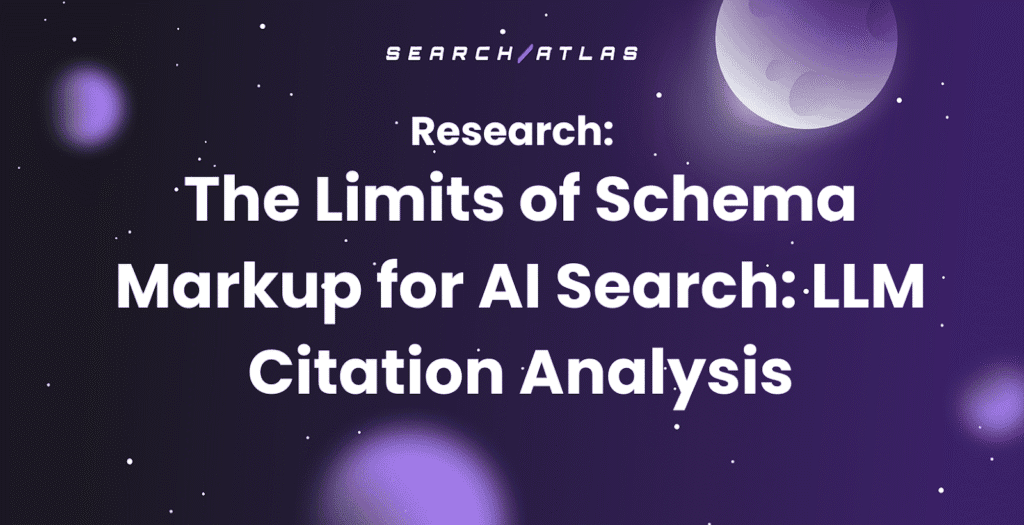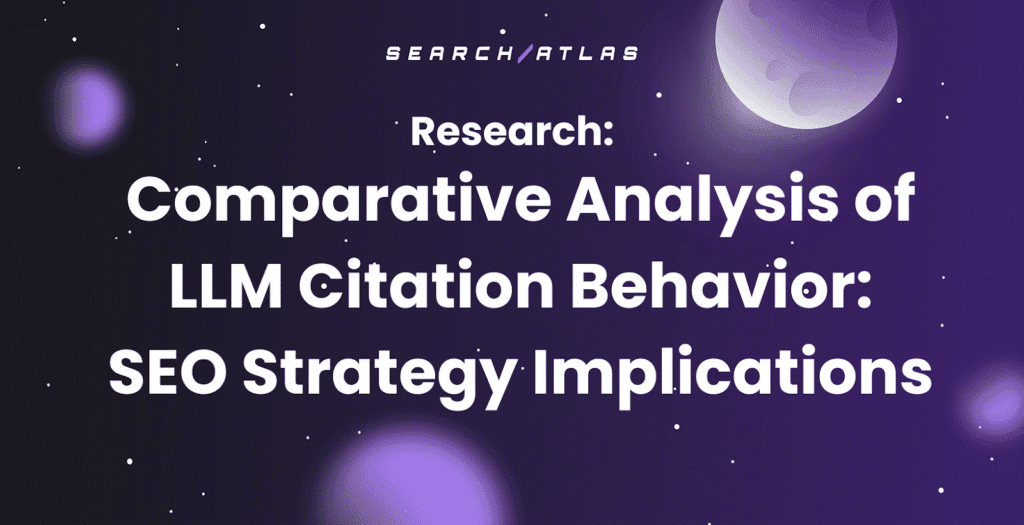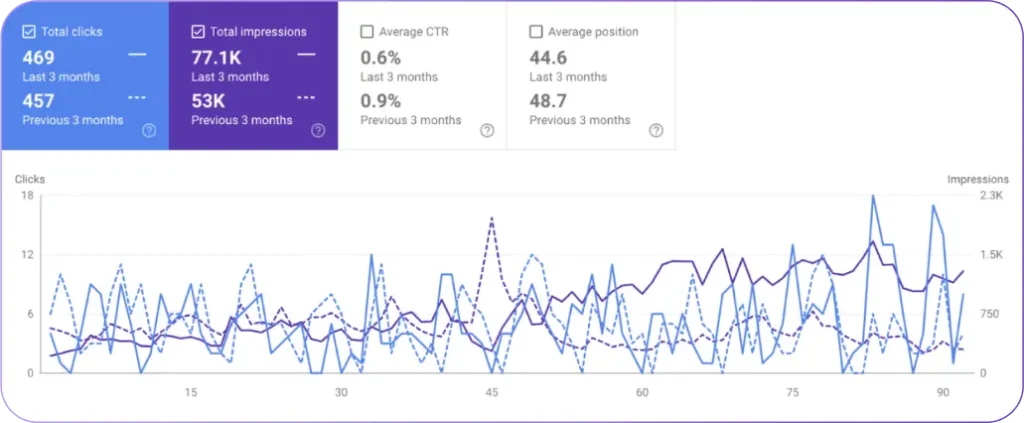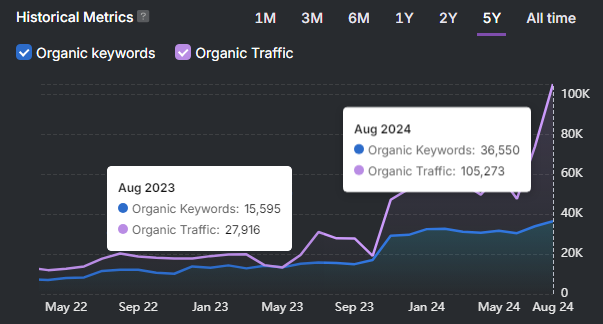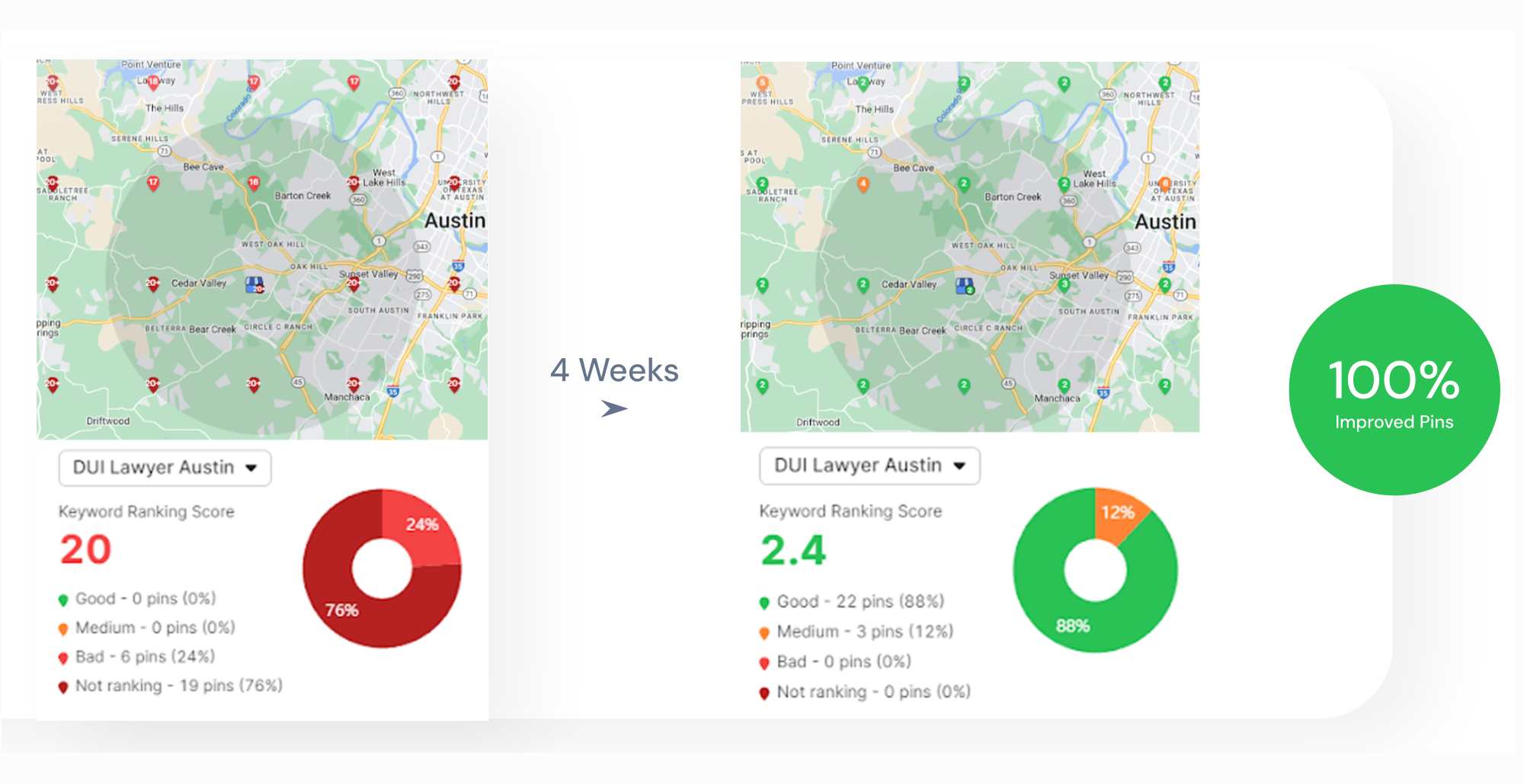You don’t need more impressions if your content appears in search results but users keep scrolling past it. You need more clicks. Click-through rate, or CTR, stands as one of the most important yet overlooked performance signals in SEO. It shows how effectively your title, description, and positioning turn visibility into actual traffic. A weak CTR wastes opportunities, even with top rankings.
Improving CTR begins with crafting search listings that match user intent, stand out in crowded results, and invite action. This guide outlines 7 SEO best practices that help your content earn more organic clicks by making every impression count.
What is a Click-Through Rate (CTR)?
Click-through rate (CTR) measures the percentage of people who click on a link or call to action after seeing it. It reflects how well your content drives engagement compared to the number of times it appears.
CTR = (Clicks ÷ Impressions) × 100
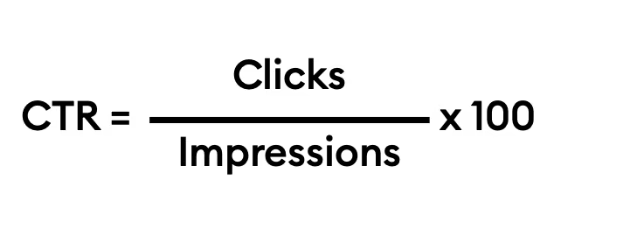
For example, if a page shows up 1,000 times and gets 20 clicks, the CTR is 2%. A high CTR means your message resonates. A low CTR points to missed opportunities. Track and improve CTR to drive more traffic and achieve stronger SEO performance.

Why Is CTR Important?
CTR means more than a percentage. It shows how well your message connects with your audience. There are different reasons why CTR is important. The reasons why CTR is important are listed below.
- Measures Campaign Effectiveness: CTR shows the percentage of people who found your link or content compelling enough to click. A high CTR means your message matches what users search for. This highlights which content performs best.
- Signals Relevance to Search Engines: A consistently high CTR signals that your content meets user needs. This often leads to higher rankings, more organic traffic, and greater visibility.
- Guides Content Optimization: By tracking CTR, you identify which headlines, descriptions, or keywords attract clicks. This insight helps refine your message and improve results over time.
- Reflects User Engagement: A strong CTR shows users find your content valuable. This confirms your messaging resonates and encourages deeper interaction with your brand.
What Are the 7 Best Practices to Improve CTR for a Website?
Ranking high on Google doesn’t complete the job. The goal is getting users to click. AI previews, rich snippets, and interactive features pull attention in every direction. Earning clicks requires more than visibility. Your content must stand out, signal value instantly, and match what the searcher wants.
CTR shows how effective your SEO performs. Use these seven best practices to write, structure, and optimize your pages so your results earn clicks, even in the most competitive SERPs of 2025.
There are 7 best practices to improve CTR for a website. The 7 best practices to improve CTR for a website are listed below.
1. Craft Intent-Driven, Click-Worthy, and Concise Meta Tags
Your title tag and meta description serve as the first point of contact with potential visitors once your content appears in search results. Rankings alone don’t drive traffic. These elements must capture attention and match search intent. They act as your front-line pitch. They decide whether users engage or scroll past.
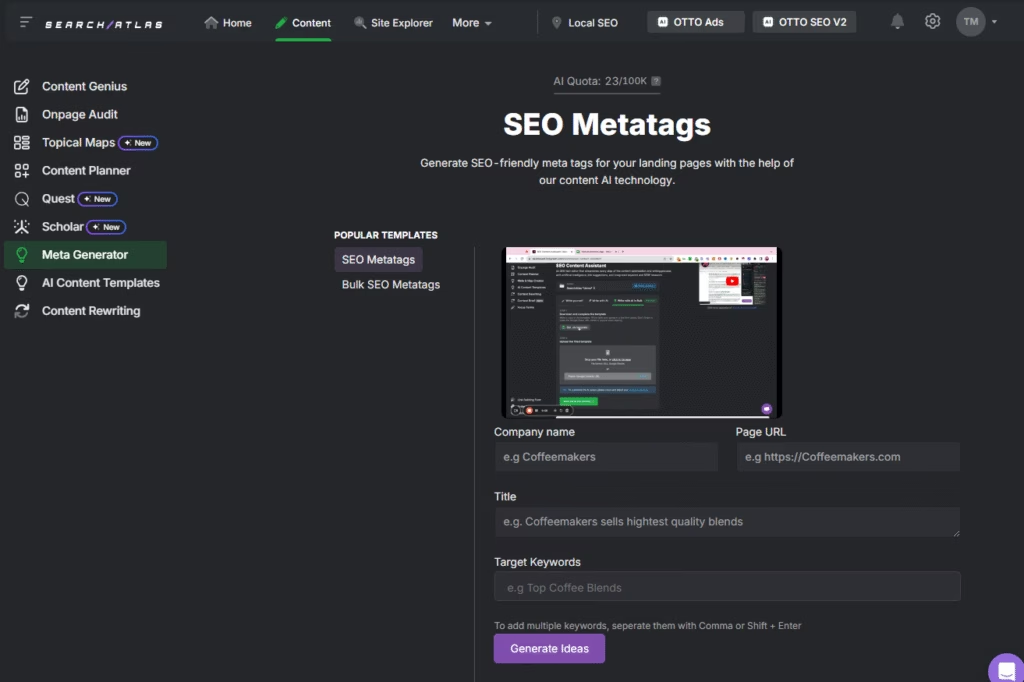
There are different ways to craft meta tags that improve CTR. The different ways to write meta tags that improve CTR are listed below.
- Match what people want: Use keyword research to understand intent. Place the keyword early in the title. Align the description with that intent and reinforce the value.
- Write clear, persuasive copy: Treat the title as headings. Treat the description as a pitch. Use active language, strong verbs, and emotional appeal. Include a call to action when relevant. Keep titles under 60 characters. Keep descriptions under 150 to avoid truncation.
- Avoid vague or spammy phrasing: Skip generic titles. Avoid stuffing or clickbait. Make each title and description specific, accurate, and tailored to the page.
- Test and track performance: Use Google Search Console (GSC) to see which combinations drive the most clicks. Make small adjustments and monitor their impact.
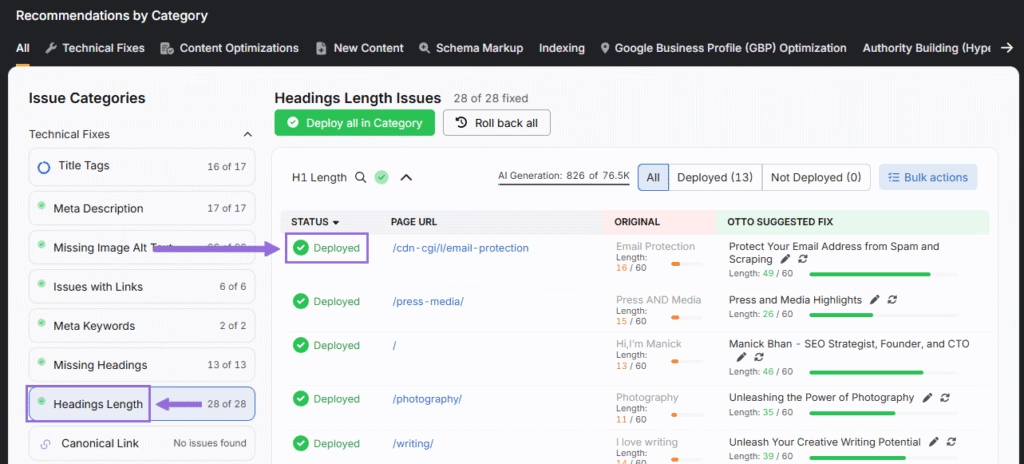
2. Use Clean and Concise SEO-Friendly URLs
A URL gives your first chance to show what your page covers. It builds trust and sets clear expectations when it looks clean and easy to read. That clarity helps your result stand out. Clear URLs help people and search engines understand your content fast. That leads to more clicks and stronger rankings.
Keep URLs short, descriptive, and filled with relevant keywords. Avoid random characters or numbers that confuse users. There are different ways to structure a URL. The different ways to structure a URL are listed below.
- Good URL: yoursite.com/improve-ctr. This version stays clear, concise, and includes keywords that describe the content.
- Bad URL: yoursite.com/page?id=12345&type=abc. This version uses dynamic parameters from a CMS or database. It offers no context or keyword value. It reduces clarity and weakens click appeal.
3. Implement Schema Markup for Rich Snippets
Schema markup adds structured data to your pages. It helps search engines interpret your content with more accuracy. This leads to rich snippets in search results, such as star ratings, FAQs, or step-by-step instructions. These elements stand out visually and build trust.
Match the format of your content with types like Article, Product, Review, or FAQ. Even adding business contact details increases clarity and boosts click appeal.
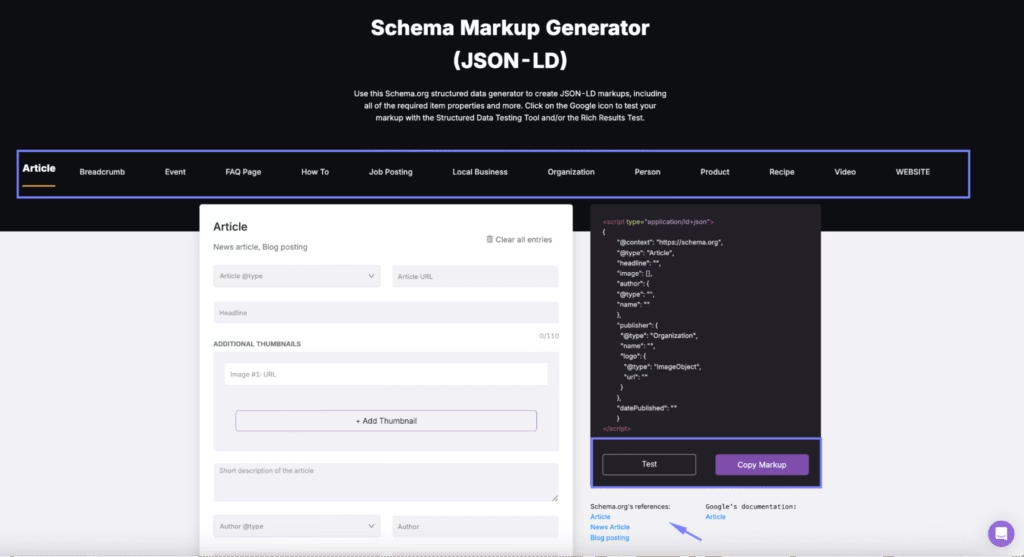
Use the Search Atlas Schema Markup Generator. It builds copy-ready JSON-LD code for formats like FAQ or HowTo. Paste the code into your HTML or inject it through your CMS. Schema does not guarantee rich snippets. Still, proper use of schema markup tools increases visibility, draws more attention, and drives higher click-through rates.
4. A/B Test Key On-Page Elements
Run A/B tests to collect real data. Track performance to find top-performing versions. Use those insights to update your pages and drive more clicks over time. Testing different versions of titles, meta descriptions, and on-page elements improves CTR. Small changes impact how users respond to your listings.
There are different ways to run effective tests. The different ways to run effective tests are listed below.
- Vary headlines: Use different phrasing to find what grabs attention fastest.
- Experiment with calls to action: Change wording in meta descriptions to see what drives clicks.
- Adjust structure: Shift word order or include numbers to increase clarity and appeal.
5. Utilize Brand Recognition to Build Trust
A strong brand turns impressions into clicks. Users click on familiar names over unknown ones, even without a top ranking. Recognition builds trust. Trust drives clicks.
Maintain consistent messaging and visual style across your website, emails, and social platforms. Use the same tone, colors, and structure in every touchpoint. Engage with your audience. Respond to comments. Join discussions in your space. Appear in the places your users already visit.
That repetition builds reputation. Users learn to expect quality when they see your name. A strong brand earns higher CTR by making the decision easy—click the name they trust.
6. Target Featured Snippets and PAA with Concise Answers
Featured Snippets and People Also Ask (PAA) boxes appear at the top of many Google search results. They capture attention and drive clicks before users scroll. These placements increase CTR by delivering fast, direct answers and proving authority.
There are different ways to win Featured Snippets and PAA boxes. The different ways to win Featured Snippets and PAA boxes are listed below.
- Research keywords that trigger these features. Use the Search Atlas Keyword Magic Tool to find terms with informational or commercial intent. Check the SERP Features column in the Search Atlas Keyword Research Tool to identify opportunities with active snippets or PAA boxes.
- Structure content with clear intent. Use subheadings formatted as questions (H2s or H3s) that reflect user queries. Place a short, direct answer of 40–60 words under each question. Follow with examples or extra context to build clarity.
- Use numbered lists for steps, bullet points for highlights, and tables for comparisons. Review current Featured Snippets for your target keyword. Match the format—list, paragraph, or table—and improve it. Deliver a more complete, more relevant, and easier-to-scan answer to earn clicks before users reach the standard listings.
7. Analyze data
Data reveals what drives clicks and what needs adjustment. Use tools like Google Analytics (GA4), Google Search Console (GSC), Search Atlas GSC Insights, and Search Atlas Report Builder to track CTR across pages, keywords, and devices.
Look for patterns in the data. Identify titles or meta descriptions that earn the most clicks. Find listings with high impressions and low engagement. These gaps show where your message fails to connect with users.
There are different ways to analyze CTR performance. The different ways to analyze CTR performance are listed below.
- CTR by Page: Identify which pages attract clicks and which ones fail to engage.
- CTR by Query: Find keywords that perform well and uncover those that underperform.
- Impressions vs. Clicks: Highlight terms with visibility but low click-through rates.
- Average Position: See how ranking influences CTR and where to push for gains.
- Device Type Performance: Compare CTR across desktop and mobile to find experience gaps.
Review this data often. Test small changes in headlines, meta descriptions, or content focus. Let insights drive the next steps. Consistent refinement leads to better performance and more clicks.
How to Optimize Your SEO Strategy With AI?
Manual analysis and outdated checklists limit SEO performance. Artificial intelligence now drives higher visibility, stronger rankings, and better click-through rates. AI removes guesswork, speeds up execution, and delivers consistency across every part of the workflow.
There are different ways to integrate AI into SEO. The different ways to integrate AI into SEO are listed below:
- Map keywords to intent: Use AI to classify queries by purpose—informational, navigational, or transactional. Align the right content with the right audience.
- Test titles and descriptions: Let AI generate variations of metadata. Run A/B tests to find versions that drive more clicks.
- Expand content with semantic analysis: Use AI to uncover related topics, unanswered questions, and missing subheadings. Fill those gaps to match user expectations.
- Apply schema with precision: AI recommends and inserts structured data for FAQs, reviews, or products. That boosts visibility in rich results.
- Monitor technical SEO: AI crawlers scan for errors, broken links, and speed issues. Fix problems fast and maintain strong performance.
Use Search Atlas OTTO SEO to automatically optimize the pages and meta tags for higher CTR. Install the script and OTTO SEO starts running audits, suggesting improvements, generating content, and enhancing site structure. OTTO SEO drives better results with less manual work.
Start your free Search Atlas trial today and improve your CTR!



